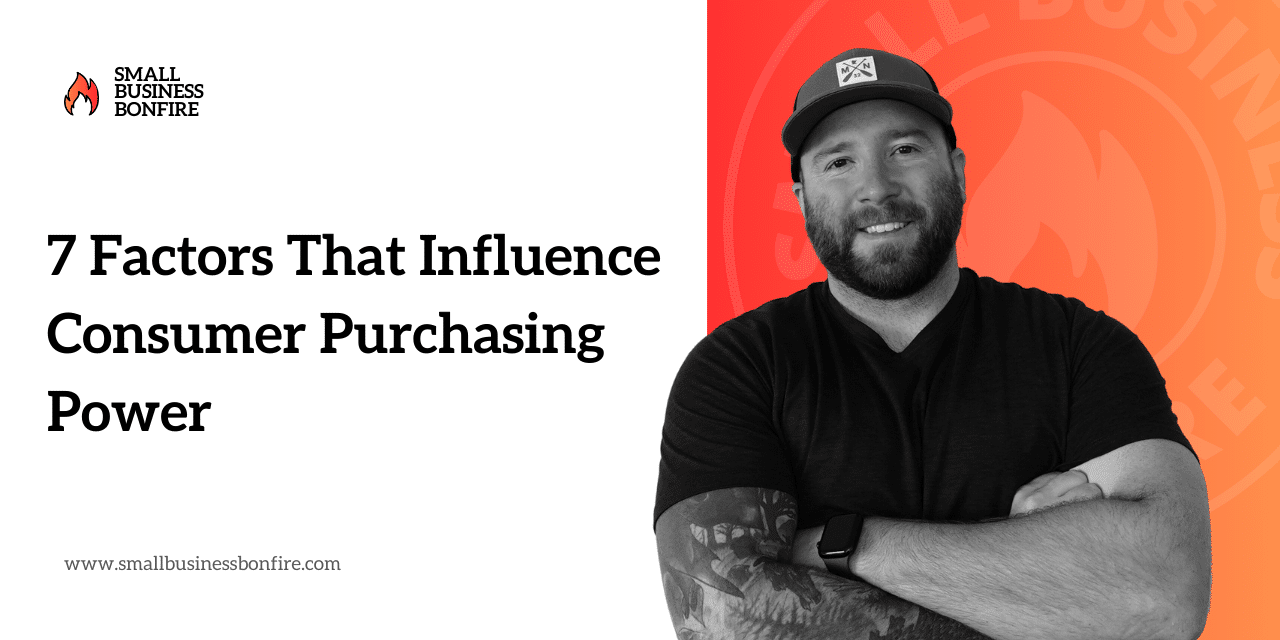By Joseph Brady
Your product/service is meaningless unless there are people to buy it, and more importantly, they have purchasing power. Consumer Purchasing Power measures the value of money with which consumers can purchase goods and services. It is related to the Cost of Living Index and indicates the degree to which inflation affects the consumer’s ability to buy.
Purchasing power is a relative measure and is the most relevant when analyzed for changes over time. These changes in purchasing power are influenced by multiple economic factors.
1. Changes in Price Due To Inflation and Deflation
Inflation is the worst enemy of purchasing power. Inflation is the process where price levels increase throughout the sectors of the economy, reducing the purchasing power of individuals to buy commodities at current income levels. Inflation is neither inherently bad nor good. It is ever-present and must be counterbalanced by increased wages, rates of interest, and other factors over time. On the other hand, during deflation periods when prices drop, relative purchasing power increases.
2. Employment and Real Income
Purchasing power depends on real income, i.e., the amount of income a person makes adjusted for inflation. Employment levels and average salary levels tremendously influence the purchasing power of an economy. The more people are employed, the more money they earn and the more money they have to spend on products and services. This affects the total purchasing power rather than having a relative shift. Employment does not impact the value of a currency, but puts more money in the hands of people, increasing both commercial and tax revenues.
3. Currency Exchange
Fluctuating exchange rates affect purchasing power. If one currency gets devalued against another, the price of goods from the second country will be higher in the first country’s currency. This does not directly affect the purchasing power for domestic products, but businesses that depend on suppliers in the second country will have to pay increased prices for imported goods. These higher costs will then be subsequently passed on to the customers, leading to inflation and lower purchasing power.
4. Availability of Credit and Interest Rates
If customers can’t afford a product or service they really need themselves, they will seek out financial assistance from banks or other entities. So, the availability of credit for consumers and businesses from financial institutions affect the total purchasing power in almost the same way a higher income would. With more money at their disposal, customers and companies can spend more, giving a boost to personal purchasing power. Lenders also earn interest, which provides them with more money to spend in the economy.
The interest charged by these lenders also affects the consumer’s purchasing power. When interest rates go up, consumers are less likely to borrow money from lenders to purchase high-ticket items like a car or an apartment.
5. Supply and Demand
This refers to the amount of goods/services provided by businesses versus the demand for the same from consumers. Supply increases anytime companies start to produce more goods than consumers currently purchase. This often leads to price reductions for customers, so businesses can sell unsold inventory and recover the cost of production. Lower prices mean higher consumer purchasing power. Higher demand has the opposite result. There are not enough goods or services supply to meet demand; leading to higher prices for products and services – lower purchasing power.
6. Tax Rates
Taxes effectively lower an individual’s real income. So, higher taxes leave less money with individuals and reduce their purchasing power.
7. Prices
The price of goods and services is one of the most important factors influencing the consumer’s purchasing power. When the price falls, purchasing power increases, and when prices go up, purchasing power goes down; provided that other factors stay the same. Prices change over time and are usually calculated using consumer price index (CPI) by tracking the prices of a basket of consumer goods like food, groceries, clothing, and fuel to show general changes in consumer prices over time.
Consumer Purchasing Power is one of the fundamentals of economics that businesses need to understand. Why? With a fair understanding about your target audience’s purchasing power, you can price your products/services in such a manner that consumers are able to afford them. These price points must also earn you profits.
Featured photo credit: Depositphotos
